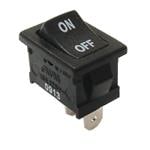 Quantum Tech
Quantum Tech
Quantum 2.0 could revolutionise computing and communications
“The potential impact of Quantum technology is absolutely profound,” said Professor Neil Stansfield, Head of Excellence for Technology Innovation at the Defence Science and Technology Laboratory, at last week’s CW (Cambridge Wireless) Technology and Engineering Conference (CW TEC) 2016.
Quantum dots help manipulate light
Leiden physicists have manipulated light with large artificial atoms, so-called quantum dots. Before, this has only been accomplished with actual atoms. It is an important step toward light-based quantum technology. The study was published in Nature Communications. When you point a laser pointer at the screen during a presentation, an immense number of light particles races through the air at a billion kilometers per hour.
Light and matter merge in quantum coupling
Rice physicists are closing in on a way to create a condensed matter state in which all the electrons in a material act as one by manipulating them with light and a magnetic field. The effect made possible by a custom-built, finely tuned cavity for THz radiation shows one of the strongest light-matter coupling phenomena ever observed. The work by Rice physicist Junichiro Kono and his colleagues is described in Nature Physics.
Prototype chip could lead to practical quantum computer
Trapped ions are probably the most widely studied qubit technology, but they've historically required a large and complex hardware apparatus. In Nature Nanotechnology, researchers from MIT and MIT Lincoln Laboratory report an important step toward practical quantum computers, with a paper describing a prototype chip that can trap ions in an electric field and, with built-in optics, direct laser light toward each of them.
Programmable ions could aid general-purpose quantum computers
Quantum computers promise speedy solutions to some difficult problems, but building large-scale, general-purpose quantum devices is a problem fraught with technical challenges. To date, many research groups have created small but functional quantum computers. By combining a handful of atoms, electrons or superconducting junctions, researchers now regularly demonstrate quantum effects and run simple quantum algorithms—small programs ded...
Electrified quantum diamond to become essential for quantum networks
Dmitry Fedyanin from the Moscow Institute of Physics and Technology and Mario Agio from the University of Siegen and LENS have predicted that artificial defects in the crystal lattice of diamond can be turned into ultrabright and extremely efficient electrically-driven quantum emitters.
Brightest quantum emitters mimic graphene
Associate Professor Igor Aharonovich and Professor Milos Toth, photonics researchers at University of Technology Sydney, in collaboration with scientists at MIT, have discovered some of the brightest quantum emitters ever recorded – in hexagonal boron nitride (hBN), a honeycomb structure that mimics graphene. Instead of carbon atoms, however, it is an alternating array of boron and nitrogen atoms.
Improving computer graphics with quantum mechanics
Caltech applied scientists have developed a way to simulate large-scale motion numerically using the mathematics that govern the universe at the quantum level. The technique, presented at the International Conference and Exhibition on Computer Graphics & Interactive Techniques (SIGGRAPH), held in Anaheim, California, from July 24-28, allows computers to more accurately simulate vorticity, the spinning motion of a flowing fluid.
Researchers realise quantum bits
A research team from Germany, France and Switzerland has realised quantum bits, short qubits, in a new form. One day, they might become the information units of quantum computers. To date, researchers have realised qubits in the form of individual electrons. However, this led to interferences and rendered the information carriers difficult to programme and read. The group has solved this problem by utilising electron holes as qubits, rather ...
Method creates universal quantum computer with qudits
Physicists from MIPT and the Russian Quantum Center have developed an easier method to create a universal quantum computer using multilevel qudits, each one of which is able to work with multiple "conventional" qubits. Professor Vladimir Man'ko, Aleksey Fedorov and Evgeny Kiktenko have published the results of their studies of multilevel quantum systems in a series of papers in Physical Review A, Physics Letters A, and also Quantum Measureme...







